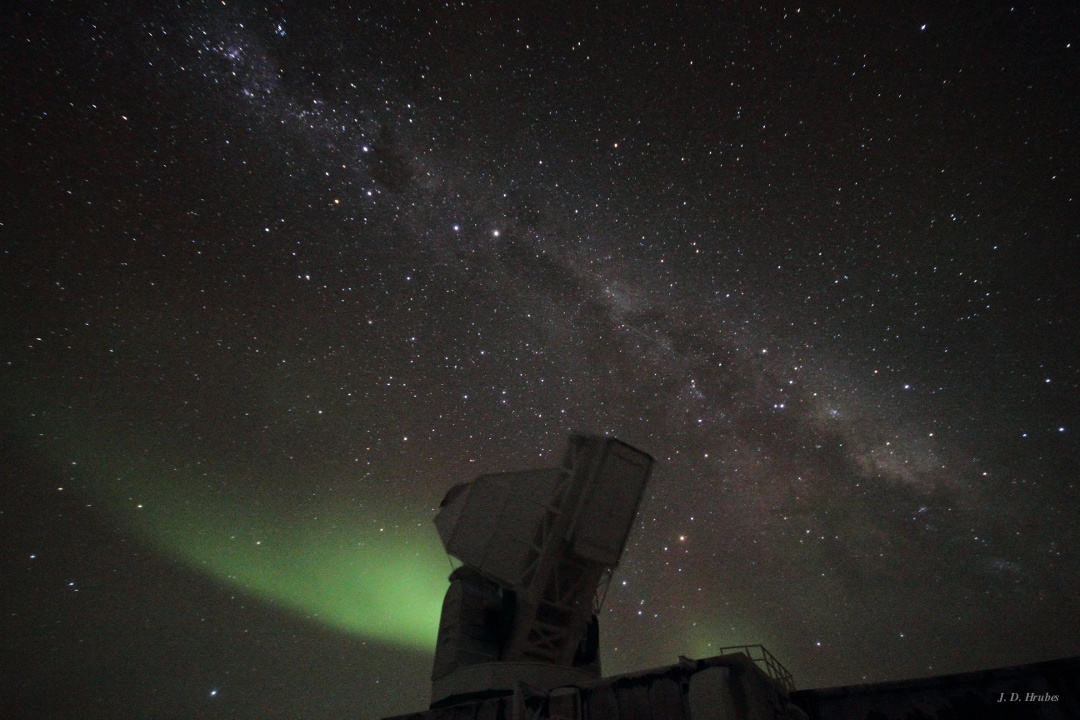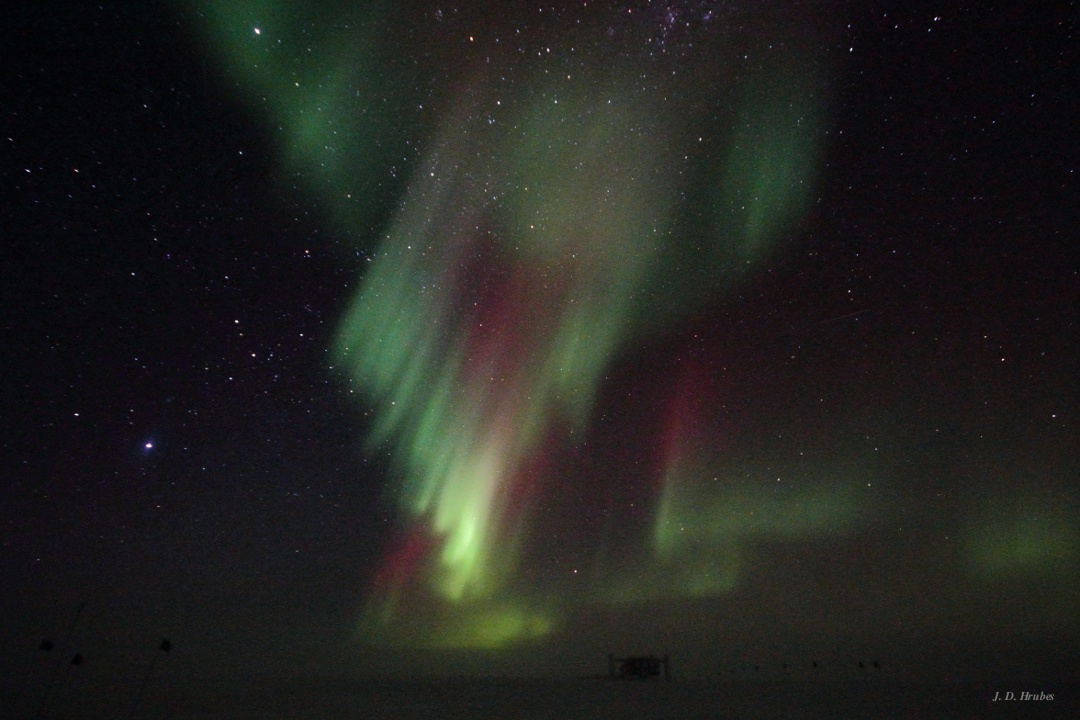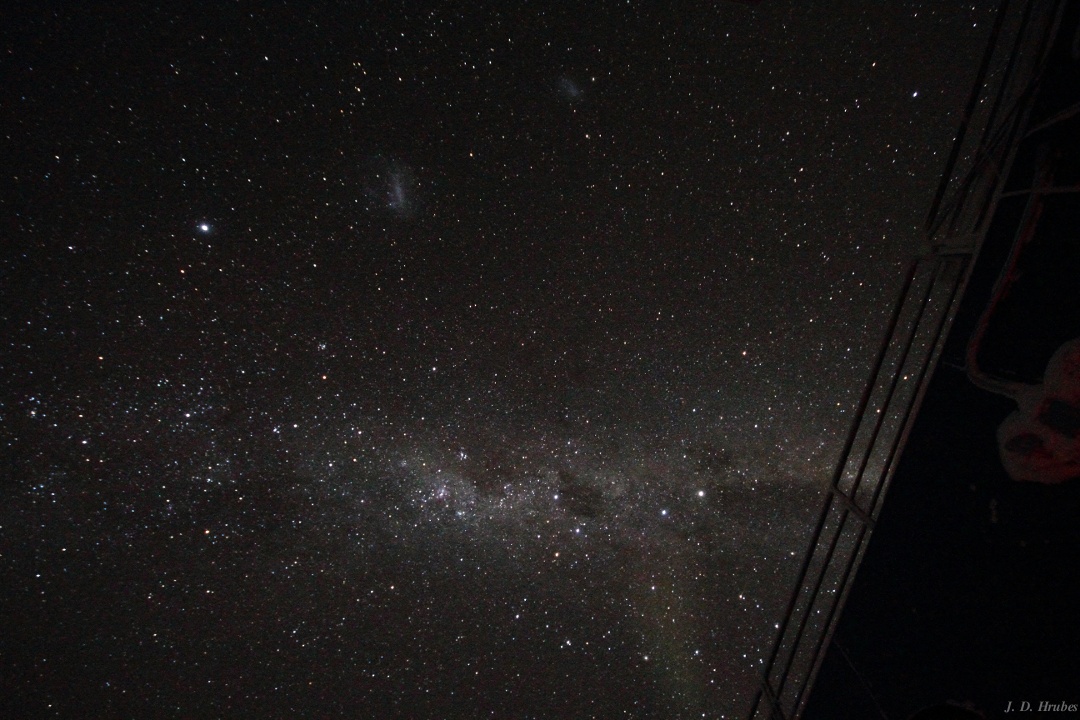May, 2010....J.
Dana Hrubes...updated May 31, 2010 , 0710 GMT
(CLICK ON UNDERLINED
LINKS FOR
PHOTOS....CLICK
"BACK" ON YOUR BROWSER TO RETURN TO THIS PAGE)


South Pole Telescope (SPT) and our Milky Way galaxy
May is the month when we are fully
settled into our routine, living and working in the eternal darkness
and frigid temperatures. We have had a couple of windstorms, but
between them, the skies have been beautiful, filled with auroras and
thousands of stars. SPT bathed in starlight SPT under colorful aurora SPT and aurora-1 SPT and aurora-2 aurora over BICEP II telescope aurora over Dark Sector Lab (DSL) aurora and BICEP II very bright aurora over SPT bright aurora over SPT colorful aurora corona aurora over SPT
I spend most of my waking hours over at the Dark Sector Laboratory and
SPT so that is where I take most of my photos, but I caught some aurora
on my walk in to the station one day. That is why I always carry a
tripod in my backpack. aurora over destination alpha at main station aurora and satellite trace over the main station

A colorful aurora raining down over the Ice Cube Neutrino Laboratory (ICL)
More aurora photos:
aurora over ICL aurora over ICL-2 aurora over DSL aurora and DSL crane aurora and DSL steps
 Two of our closest galaxies, the Small and Large Magellanic Clouds, seen as the two fuzzy spots above the Milky Way galaxy
Two of our closest galaxies, the Small and Large Magellanic Clouds, seen as the two fuzzy spots above the Milky Way galaxy
Next Month - June: Midwinter Solstice!
Recent
South Pole Telescope Technical Papers
A Real-Time Photo of South Pole Station as Seen
from the ARO
Building (live when satellite is up)
A
Comprehensive
South Pole Web Site by Bill Spindler
Winterover
Web
Pages
(Bill Spindler's List)
BACK
TO MY SOUTH POLE 2010 PAGE
BACK TO MY BI-POLAR HOME PAGE
